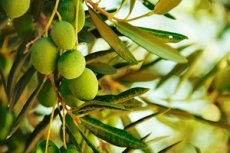New publications
Ethanol extracts from olive leaves show promise in fighting cancer and infections
Last reviewed: 02.07.2025

All iLive content is medically reviewed or fact checked to ensure as much factual accuracy as possible.
We have strict sourcing guidelines and only link to reputable media sites, academic research institutions and, whenever possible, medically peer reviewed studies. Note that the numbers in parentheses ([1], [2], etc.) are clickable links to these studies.
If you feel that any of our content is inaccurate, out-of-date, or otherwise questionable, please select it and press Ctrl + Enter.

A recent study published in the journal Antioxidants examined the therapeutic potential of ethanol extracts of olive leaves from Spain and Greece. The results show that both extracts, especially the Greek one, have high antioxidant activity and significant antimicrobial and anticancer properties, suggesting potential applications in healthcare as antimicrobial agents and melanoma treatment.
In previous studies, phytochemicals from medicinal plants have shown promise in developing new drugs, especially chemotherapeutic agents for various cancers, including melanoma, which is known for its aggressiveness and metastasis. However, despite extensive studies that have established the antioxidant and antimicrobial properties of olive leaf extracts and their potential in treating several cancers, there is a gap in understanding the phytochemical profiles of olive leaves from different regions and their specific effects against melanoma, especially when applied topically.
This study filled the existing research gaps by characterizing ethanol extracts of olive leaves from Spain and Greece, focusing on their chemical, trace elemental and inorganic contents, and evaluating their therapeutic potential as antimicrobial, anti-melanoma and angiogenesis-modulating agents. The researchers collected olive leaves from Seville, Spain (OFS) and Lefkada, Greece (OFG). These leaves were dried, ground and mixed with a solvent in preparation for analysis. The mixture was then extracted, filtered, concentrated and stored.
The study examined the beneficial compounds in olive leaf extracts from Spain (OFS) and Greece (OFG). The extraction yield, the percentage of dry extract obtained from the total dry plant material, was 11.34% for OFS and 9.46% for OFG. OFG had a higher total phenolic content (99.228 μg/mg) compared to OFS (56.733 μg/mg). Phenolics are important plant compounds with health benefits, and luteolin 6-C-glucoside and luteolin 7-O-glucoside were the major phenolics in OFG, while oleuropein was most abundant in OFS.
Triterpenes, another group of beneficial compounds, were higher in OFG (111.747 μg/mg) than in OFS (57.085 μg/mg), with oleanolic acid as the most significant component. Elemental analysis showed that OFS contained almost twice the amount of metals compared to OFG.
The study highlights the health benefits of olive leaves, particularly their rich antioxidant content. Extracts of Greek and Spanish olive leaves were analyzed and found to contain significant concentrations of phenolic compounds and triterpenes, with the Greek extract showing higher levels. The study notes that the differences in compound concentrations compared to previous studies are likely due to differences in climate and growing conditions.
Future studies should cover wider geographic variations, delve deeper into the mechanisms of metal chelation by polyphenols, and examine the long-term health effects of these extracts. Additionally, further studies may explore the potential synergistic effects of the various compounds present in the extracts, enhancing their therapeutic applications.
